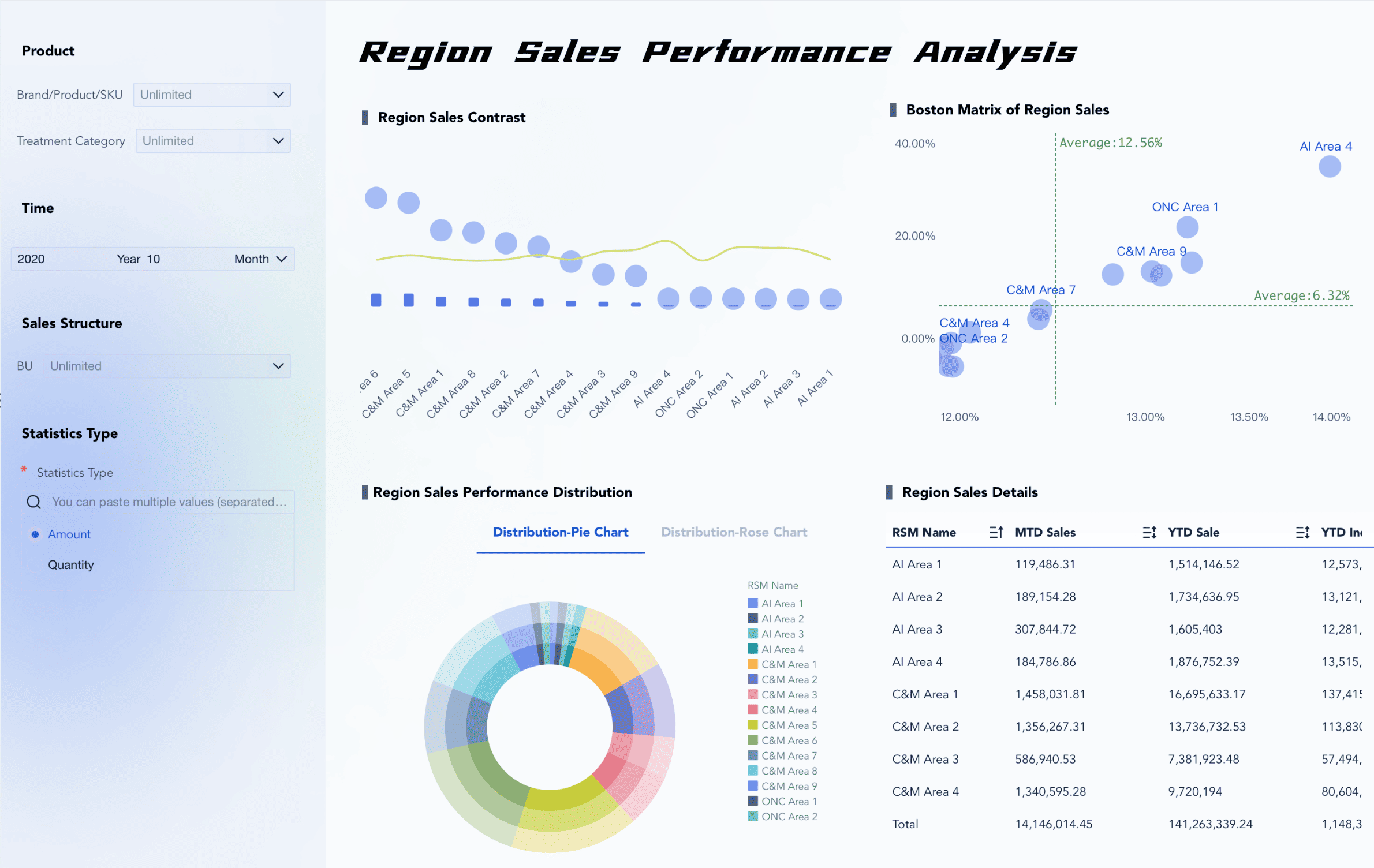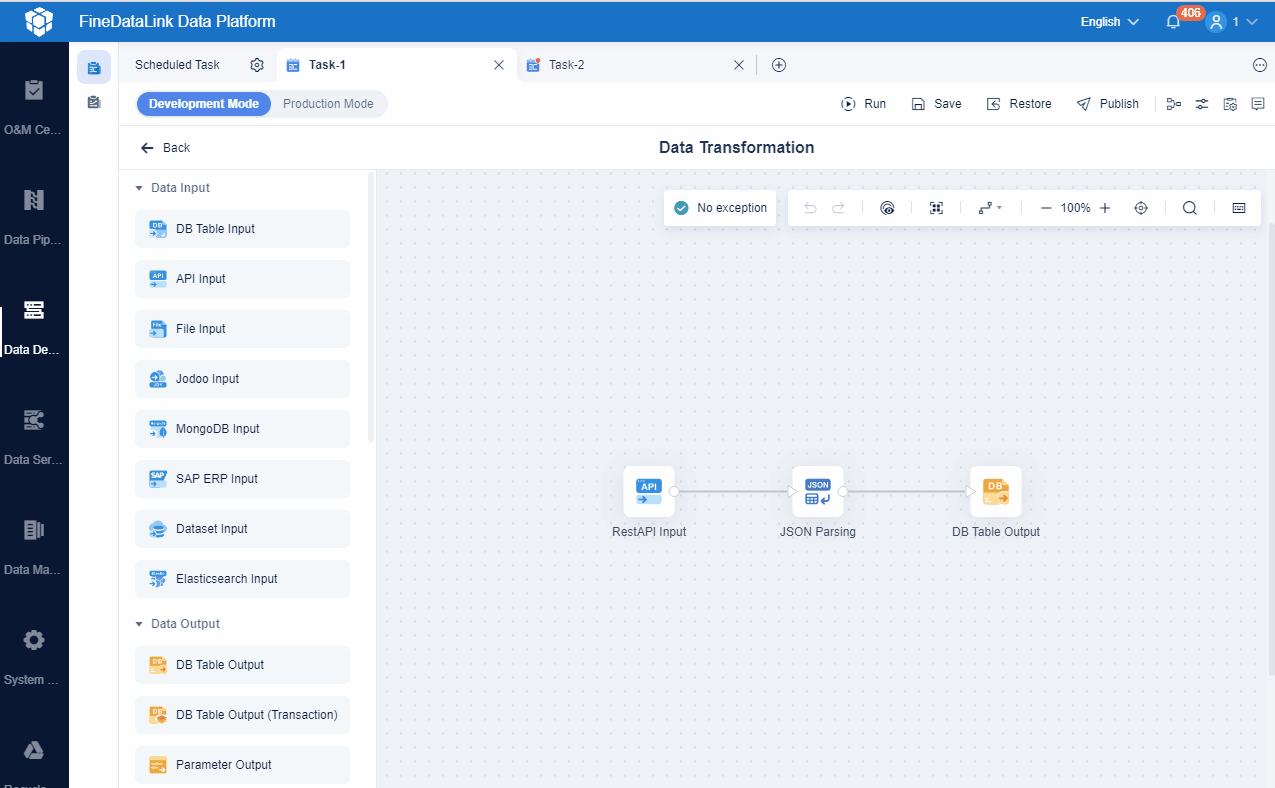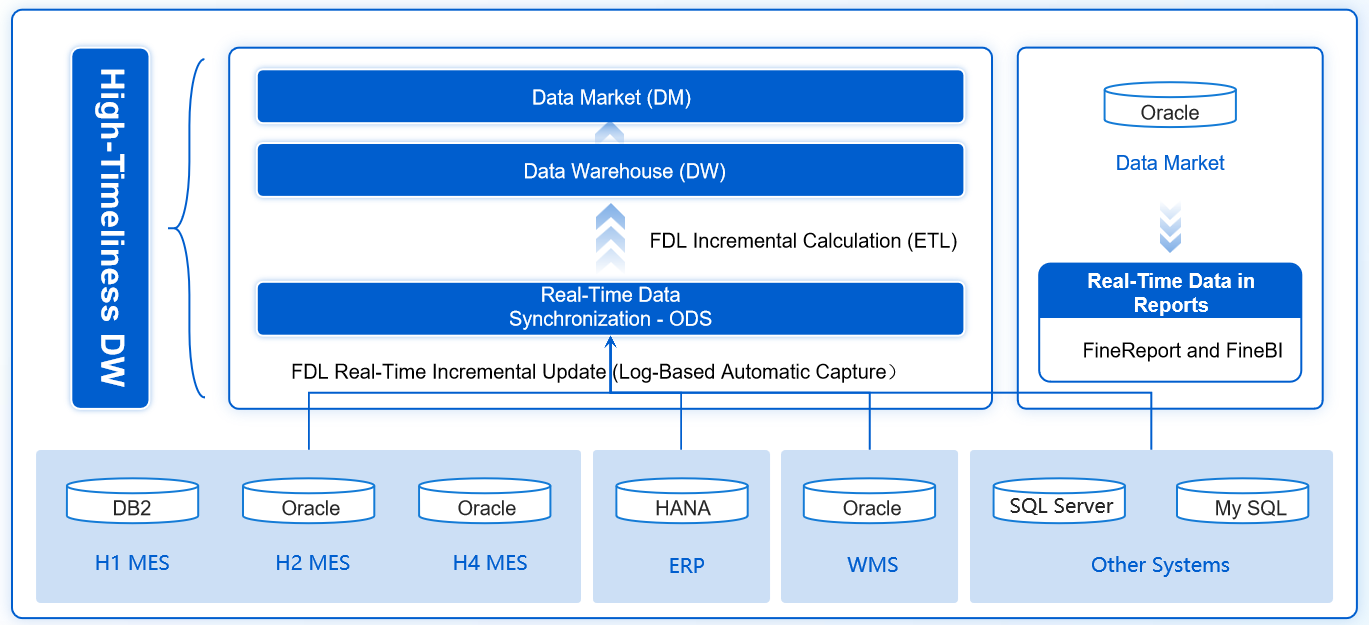You face data quality challenges almost every day. Many organizations struggle, with 64% reporting data quality issues as their top concern. You can improve data quality by implementing data governance use cases that bring structure and clarity to your data assets. Platforms like FineDataLink make these improvements actionable by providing real-time integration and automation. When you use proven steps and the right tools, you build trust in your data and support smarter decisions.
| Evidence Point | Description |
|---|---|
| Data Accuracy | Structured frameworks and clear definitions enhance data accuracy. |
| Compliance | Governance helps maintain compliance and reduces data breach risks. |
| Decision-Making | Accurate, approved data supports faster, better decisions. |
| Centralized Access | Centralized data access increases reliability across your organization. |
| Automation Support | Defined policies enable scalable analytics and automation. |
| AI Preparation | Governance prepares your data for trustworthy AI applications. |
Data Governance and Data Quality in Data Governance Use Cases

Why Data Governance Matters
You need a strong data governance and data quality strategy to build trust in your organization’s information. Data governance sets the rules and standards for how you manage, protect, and use data. When you follow a data governance framework, you create a foundation for data quality improvement. Recent studies show that organizations use data governance to accelerate informed decision-making, ensure regulatory compliance, boost operational efficiency, enhance customer satisfaction, and facilitate risk management.
| Reason | Explanation |
|---|---|
| Accelerating informed decision-making | High-quality data is essential for generating accurate insights, which drive informed decisions. |
| Ensuring regulatory compliance | High data quality is necessary to comply with industry regulations, demonstrating data accuracy. |
| Boosting operational efficiency | Quality data reduces errors in processes, enhancing efficiency and productivity. |
| Enhancing customer satisfaction | Quality data improves customer understanding, leading to better marketing and service. |
| Facilitating risk management | Reliable data is crucial for effective risk management, allowing organizations to respond to threats. |
You see measurable improvements in data quality when you implement data governance and data quality controls. Data governance frameworks establish standards for accuracy and completeness, implement quality control processes, and facilitate continuous monitoring. These steps lay the groundwork for ongoing enhancement in data quality.
Key Elements for Quality
You must focus on several key elements to ensure high data quality within your data governance and data quality program. Data governance helps you identify when data is corrupt, stale, or inaccurate. High-quality data gives you accurate information, which drives better decision-making and supports your policies.
- Validation Processes: Regular checks ensure data accuracy and compliance with rules.
- Data Cleansing Methods: Tools identify and fix errors, improving data quality.
- Routine Audits: Periodic evaluations verify adherence to quality standards.
- Measurement Metrics: Defined metrics track data quality and highlight areas for improvement.
- Data Profiling: You analyze data to understand its structure and quality.
- Data Cleansing: You correct identified issues to improve quality.
- Data Monitoring: You oversee data quality through dashboards and automated checks.
Data governance and data quality work together to create a reliable environment for your organization’s data. When you invest in a data governance and data quality program, you set up processes that support continuous improvement and measurable results.

Data Governance Use Cases
Common Challenges
You encounter many obstacles when you try to implement data governance use cases for better data quality. These challenges can slow down your progress and affect your results. You need to recognize these issues early to build an effective data governance program.
- Executive support is often missing. You need leadership to secure resources and drive focus for your data governance initiatives.
- Resource allocation can be difficult. You must invest in technology, skilled personnel, and training to support your data governance processes.
- Regulatory compliance adds complexity. You must follow strict data privacy and security rules, which can complicate your data governance use cases.
- A cultural shift is necessary. Your organization must prioritize data management and quality at every level.
- Data quality remains a continuous challenge. You must ensure your data is accurate, complete, and consistent at all times.
You also face data silos. Departments often manage their own data, leading to inconsistent definitions and storage methods. This lack of standardization makes it hard to apply effective data governance across your organization. Data silos block collaboration and prevent you from sharing high-quality data between teams. When information stays isolated, you cannot get a full view of your business, which limits your decision-making.
You must address these data quality challenges to unlock the full value of your data governance use cases. Without a strong foundation, your data governance program will struggle to deliver high-quality data for analytics and business intelligence.
Solutions with FineDataLink
You can overcome these challenges by applying proven data governance use cases that directly improve data quality. Effective data governance starts with clear rules and processes that manage your data from collection to analysis. You standardize data at the point of entry, transform and profile it during preparation, and ensure proper interpretation during reporting. These steps help you maintain high-quality data and support better decision-making.
Here are some impactful data governance use cases that lead to measurable improvements in data quality:
- Update your policies to include clear data quality standards and expectations.
- Integrate data quality checks into key processes, such as data entry and migration.
- Focus your data governance program on mission-critical data that drives business value.
- Monitor quality KPIs like accuracy and completeness to track progress.
- Automate data quality rules to ensure consistency across your systems.
- Create feedback loops so you can continuously improve your data governance practices.
You also need to break down data silos. Standardize your data definitions and storage methods across departments. This approach supports organization-wide data governance and ensures everyone works with the same high-quality data.
FineDataLink provides powerful solutions to help you implement these data governance use cases for better data quality. The platform enables fast and efficient data integration from multiple sources. You can use real-time synchronization to keep your customer and business data up to date. FineDataLink’s ETL/ELT capabilities allow you to transform and cleanse your data, improving accuracy and consistency. The platform also offers API connectivity, making it easy to share high-quality data between different systems and applications.

| Solution Type | Description |
|---|---|
| Data Integration | Connects and integrates data from various sources quickly and efficiently. |
| Real-time Synchronization | Maintains accurate and current data across your organization. |
| Data Quality Enhancement | Improves data quality through automated synchronization and transformation. |
FineDataLink addresses common data quality challenges by eliminating data silos and handling complex data formats. You can streamline your operations and optimize performance with effective data governance processes. Real-time data integration ensures your reports and dashboards always reflect the latest information, supporting better decision-making.
In manufacturing, quality control is a critical data governance use case. FineReport’s solution for manufacturing quality control uses real-time monitoring and analysis to track product qualification rates, defect rates, and scrap rates. You can visualize trends, identify root causes, and optimize your production processes. By integrating FineDataLink with FineReport, you create a seamless flow of high-quality data from the factory floor to your analytics dashboards. This approach helps you maintain high standards, reduce costs, and improve customer satisfaction.
You can apply these data governance use cases in any industry. When you use effective data governance and the right tools, you build a strong foundation for high-quality data and smarter decision-making.

Implementing Data Governance and Quality For Data Governance Use Cases

Strategy and Objectives
You need a clear strategy to achieve success with How to Implement Data Governance Use Cases for Better Data Quality. Start by defining your data governance goals and desired outcomes. These objectives guide your data governance implementation and ensure your efforts align with business needs.
| Objective | Description |
|---|---|
| Standardization of data | Ensures consistency in data handling and interpretation. |
| Integration of data | Prevents silos and promotes a unified approach across departments. |
| Protection of data | Safeguards against breaches and unauthorized access. |
| Proper storage | Ensures data is kept securely and remains accessible when needed. |
| Harmonization of data use | Aligns with organizational goals and regulatory requirements. |
You should also focus on these key areas:
- Data quality management: Set up processes to measure, monitor, and improve accuracy, completeness, and timeliness.
- Metadata management and cataloging: Build a central inventory of data assets for easier discovery and use.
- Data lineage mapping: Track how data moves across systems to increase transparency and accountability.
- Master data management: Consolidate core business data to create a single source of truth.
To align your data governance strategy with business goals, follow these steps:
- Understand your company’s strategic goals and tailor your data governance framework.
- Map data flows through key business processes.
- Define data standards that match business needs.
- Embed data governance and quality into daily operations.
- Track and measure effectiveness with clear KPIs.
Stakeholder Engagement
Stakeholders play a vital role in How to Implement Data Governance Use Cases for Better Data Quality. You need their support to secure resources, align strategies, and foster a data-driven culture.
| Role of Stakeholders | Description |
|---|---|
| Alignment of Data Strategies | Ensures data initiatives align with business goals. |
| Resource Allocation | Helps secure the resources for data projects. |
| Risk Mitigation | Identifies potential risks and implements measures to mitigate them. |
| Fostering a Data-Driven Culture | Encourages a culture where data is valued and used effectively. |
Engage the business early. Early engagement leads to better-defined use cases and ensures that the focus is on the possible business impact from the start.
You should:
- Engage stakeholders early to build understanding and support.
- Foster collaboration between IT and business leaders.
- Establish a steering committee for strategic decisions.
Assign clear roles:
| Role | Description |
|---|---|
| Driver | Owns the project and pushes it forward. |
| Approver | Makes key decisions and allocates resources. |
| Contributors | Provide business and IT expertise. |
| Informed | Includes all affected by the project. |
Policies and Roles
Effective How to Implement Data Governance Use Cases for Better Data Quality requires strong policies and well-defined roles. You must create data governance policies that set clear rules for data structure, processing, and maintenance. These policies support regulatory compliance and data quality standards.
Follow these steps for data governance implementation:
- Designate Data Stewards to manage and ensure the quality of specific data assets.
- Form governance committees to oversee policy development and compliance.
- Define accountability for data owners, stewards, IT staff, and compliance officers.
| Policy/Role Definition | Description |
|---|---|
| Clear Standards | Consistent rules for data structure and maintenance. |
| Data Validation | Processes to cleanse, standardize, and deduplicate data. |
| Data Governance | Defined ownership and responsibilities for data management. |
| Data Stewards | Individuals responsible for specific data assets. |
| Governance Committees | Cross-functional teams for policy oversight. |
You should also:
- Classify data and define handling procedures.
- Set security measures like encryption and access controls.
- Ensure compliance with legal and regulatory standards.
- Define data quality standards for accuracy, completeness, and consistency.
Assigning stewardship roles helps maintain data quality standards. Identify key data domains, interview stakeholders, and define a stewardship model that fits your organization. Empower stewards with training and collaborative tools. Measure and visualize results to reinforce positive behaviors.
Standardization and Tools
Standardization is essential for How to Implement Data Governance Use Cases for Better Data Quality. You need to profile your data, define criteria for accuracy and completeness, and use data quality tools for profiling and cleansing. Assign roles for data stewards and owners to manage quality processes.
Best practices include:
- Profile your data to find inaccuracies.
- Standardize data quality by setting clear criteria.
- Use data quality tools for profiling, cleansing, and validation.
- Define roles for managing quality.
- Monitor metrics for continuous improvement.
- Train staff on the importance of data quality.
- Foster collaboration between business and IT teams.
After you establish these practices, you can leverage technology to streamline your data management processes. FineDataLink offers a low-code platform that simplifies complex data integration. Its real-time synchronization ensures your data stays accurate and current. The drag-and-drop interface makes it easy for you to build and manage data pipelines without advanced coding skills. FineDataLink supports efficient ETL and ELT operations, which improve data quality by automating data handling and processing. The platform’s detailed documentation and instructional videos help you master its features quickly.
Integrating FineDataLink into your data governance and quality program enables you to break down data silos, automate data profiling and cleansing, and maintain high data quality standards. You can connect over 100 data sources, synchronize data in real time, and ensure your analytics always reflect the latest information. FineDataLink’s user-friendly design and robust capabilities make it a practical choice for efficient data management processes and analytics.

Monitoring Metrics
You must track the effectiveness of How to Implement Data Governance Use Cases for Better Data Quality. Use clear metrics to measure progress and identify areas for data quality improvement.
Key metrics include:
- Data Quality Score: Measures accuracy, completeness, consistency, and timeliness.
- Ratio of Data to Errors: Shows the proportion of error-free records.
- Data accuracy: Compares data to trusted sources.
- Data completeness: Checks for missing information.
- Data consistency: Ensures uniformity across sources.
- Accuracy Rate: Reflects how well data matches real-world values.
- Consistency Rate: Measures alignment across data sources.
Real-time monitoring helps you spot and resolve issues quickly. Use dashboards to visualize data quality measurements and track improvements. Data observability tools provide insights into data health, lineage, and usage. Advanced analytics and AI can detect patterns and predict potential problems, supporting proactive data governance and quality management.
By following these steps, you create a strong foundation for data governance and quality. You align your data governance goals with business needs, engage stakeholders, set clear policies, standardize processes, and use the right tools. This approach leads to better data quality, regulatory compliance, and the desired outcomes for your organization.

You can achieve better data quality by following clear steps in How to Implement Data Governance Use Cases for Better Data Quality. Start by identifying critical data elements, clarifying definitions, and mapping data locations. Build a strong governance team and secure executive support. Launch a pilot project using FineDataLink for integration and monitoring.
- Data governance ensures consistent, trustworthy data across your organization.
- Quick wins and continuous monitoring help you demonstrate value and sustain progress.
- Over half of organizations report measurable improvements in data quality and analytics.
Take the first step today. Strong governance empowers you to unlock innovation and drive lasting business success.

Continue Reading About Data Governance Use Cases
Enterprise Data Integration: A Comprehensive Guide
What is enterprise data and why does it matter for organizations
Understanding Enterprise Data Centers in 2025
Enterprise Data Analytics Explained for Modern Businesses
FAQ

The Author
Howard
Engineer Data Management & Ahli Data Research Di FanRuan
Related Articles

Data Hub vs Data Lake Key Differences and Use Case Explained
Data hub vs data lake: Compare structure, governance, and use cases to choose the right solution for your data integration and analytics needs.
Howard
Nov 09, 2025

What is a Product Master Data Model and Why Does It Matter
A product master data model centralizes product information, ensuring accuracy, consistency, and better business decisions across all systems.
Howard
Nov 09, 2025

How to Create a Data Strategy Roadmap Step by Step
Build a data strategy roadmap step by step to align data initiatives, set clear goals, and drive business value with effective data management.
Howard
Nov 09, 2025



